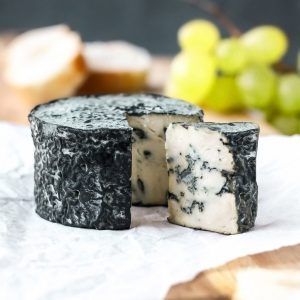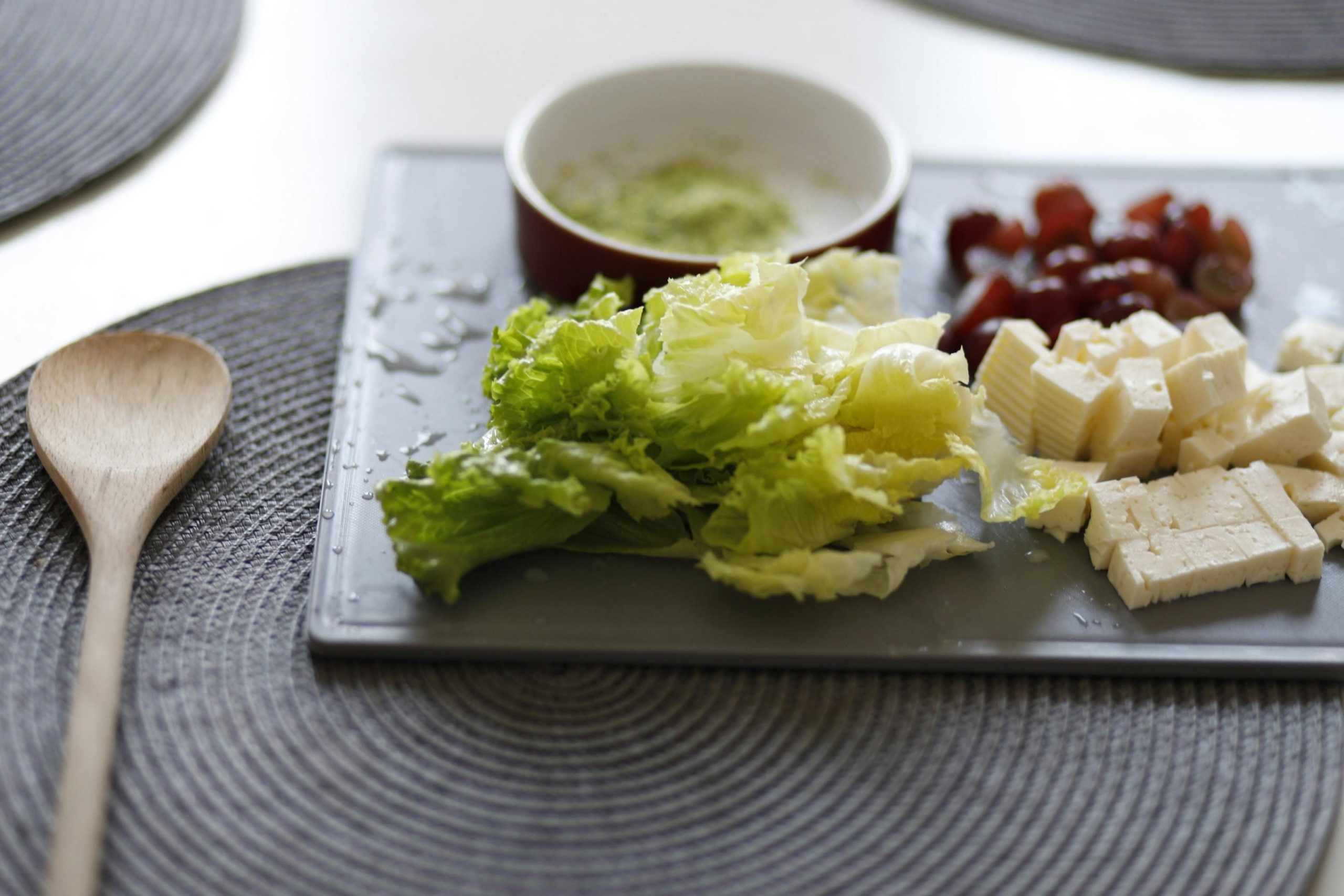Have you ever wondered if a plant-based diet means missing out on the rich flavours of traditional cheeses?
For many transitioning to veganism, the thought of giving up beloved blue cheese can be a significant hurdle.
Vegan blue cheese, with its tangy, rich flavour and creamy texture, is crafted using ingredients like cashews, coconut oil, and miso paste to mimic the classic version closely.
In this comprehensive guide, we’ll explore how to make your own vegan blue cheese, delve into different varieties, and provide top picks for every occasion, ensuring you never miss out on this dairy-free delight.
Essential Ingredients for Crafting Vegan Blue Cheese
Crafting your own vegan blue cheese at home begins with gathering the essential ingredients that contribute to its unique taste and texture. The base of most vegan blue cheeses is raw cashews, which provide a creamy, rich foundation. These should be soaked to soften them up before blending into a smooth mixture. Another critical component is refined coconut oil, which helps solidify the cheese, giving it a firm yet spreadable consistency when chilled.
To achieve the characteristic tangy flavour of traditional blue cheese, certain probiotics such as Acidophilus or Mesophilic cultures are used. These cultures help ferment the cashew base, developing the sharp, tangy taste vegan cheese lovers crave. Additionally, penicillium roqueforti, a mold culture, is incorporated to not only enhance the flavour but also to create the iconic blue veins throughout the cheese, making it visually similar to its dairy counterpart.
Lastly, no vegan blue cheese would be complete without the addition of salt and spirulina. Salt enhances the overall flavour profile and also acts as a preservative, preventing undesirable molds from developing. Spirulina is used primarily for colouring, giving vegan blue cheese those distinctive blue-green streaks that are visually reminiscent of traditional blue cheese. With these key ingredients, you can start crafting a delicious, plant-based blue cheese that rivals the dairy version in both taste and appearance.
How to Make Vegan Blue Cheese: Step-by-Step

To start making vegan blue cheese, first soak the raw cashews in hot water for about an hour to soften them. Once soaked, drain and rinse the cashews before blending them with ingredients like refined coconut oil, white miso paste, salt, onion powder, garlic powder, and water. Blend until you achieve a smooth and creamy consistency. This mixture forms the base of your cheese.
Next, divide the mixture into two parts and place each in a small springform pan or similar mold. Sprinkle spirulina over the first layer to start forming the veins. Add the remaining mixture on top and smooth it out. Finally, add another layer of spirulina on the top and gently swirl with a butter knife to create realistic blue-green marbling. Allow the cheese to set by freezing overnight, then transfer to the fridge for an hour before serving.
Achieving the Perfect Tangy Flavour in Vegan Blue Cheese

Achieving the perfect tangy flavour in vegan blue cheese involves a careful balance of ingredients and techniques. The use of probiotics plays a crucial role in this process. These beneficial bacteria help ferment the cashew base, producing the sharp, tangy flavours that are characteristic of traditional blue cheese. For an even more authentic taste, some recipes suggest adding a small amount of apple cider vinegar or white miso paste, both of which enhance the cheese’s tanginess.
Another technique to intensify the flavour is to let the cheese age in a controlled environment. While vegan blue cheese doesn’t require the same aging process as dairy blue cheese, allowing it to sit in a cool, dark place for a few weeks can significantly develop its flavours. During this time, the penicillium roqueforti works its magic, not only contributing to the cheese’s complex flavour profile but also creating those beautiful blue veins that make blue cheese visually distinctive.
Exploring Varieties of Vegan Blue Cheese

Exploring the world of vegan blue cheese reveals a delightful variety of options, each tailored to suit different tastes and culinary uses. From commercially available brands to homemade recipes, vegan blue cheese can vary significantly in texture, flavour, and appearance. Commercially produced vegan blue cheeses often aim to replicate the creamy yet crumbly texture of traditional blue cheese, using various plant-based ingredients to achieve similar taste profiles. These products are perfect for those who want a quick and convenient option without the hassle of making cheese from scratch.
For enthusiasts who prefer a more hands-on approach, making vegan blue cheese at home allows for a customised flavour experience. By adjusting the types and amounts of ingredients like miso, nutritional yeast, and various cultures, you can create a cheese that caters to your specific flavour preferences. Here are a few varieties you might consider experimenting with:
- Cashew-based blue cheese: This is the most common type, known for its smooth texture and versatility.
- Almond-based blue cheese: Offers a slightly grainier texture and a nuttier flavour.
- Coconut oil-enhanced blue cheese: Ideal for achieving a firmer texture that mimics traditional dairy-based blue cheese.
Each type of vegan blue cheese serves different culinary purposes. For instance, a softer, creamier cheese is excellent for spreading on crackers or melting into sauces, while a firmer cheese might be better suited for grating over salads or incorporating into vegan cheese boards. Whether you purchase it ready-made or opt to craft your own, exploring the varieties of vegan blue cheese opens up a new realm of flavourful possibilities in plant-based cuisine, ensuring there’s something to suit every palate and purpose.
Top Vegan Blue Cheese Picks for Every Occasion

When it comes to selecting the top vegan blue cheese picks for every occasion, the variety can be overwhelming, but each type serves a unique purpose in culinary applications. For cooking enthusiasts, some vegan blue cheeses are specifically designed to enhance hot dishes. These varieties melt beautifully and incorporate seamlessly into recipes like vegan lasagne or creamy pasta sauces. On the other hand, if you’re crafting a cheese board or looking for a perfect snack pairing, opt for firmer, crumbly types that mimic the texture and taste of traditional blue cheese crumbles. These are excellent for crumbling over salads or enjoying with a selection of fruits and crackers.
For those who love the convenience of dressings, vegan blue cheese varieties that blend smoothly are ideal for creating rich, creamy bleu cheese dressings. These dressings can be used to add a tangy kick to salads or as a decadent dip for vegetable platters. Meanwhile, if your culinary adventures are more experimental, look for artisanal brands that offer unique flavours infused with herbs or spices, enhancing the overall gastronomic experience. Whether you’re hosting a dinner party, preparing a family meal, or just indulging in a personal cheese tasting, there’s a vegan blue cheese to meet your needs, ensuring that you enjoy rich, dairy-free indulgence on any occasion.
Storing and Freezing Vegan Blue Cheese: Best Practices
Proper storage of vegan blue cheese is essential to maintain its flavour and texture. Refrigeration is crucial; vegan blue cheese should be stored in an airtight container or wrapped tightly in cling film to prevent it from absorbing other flavours from the fridge. For optimal freshness, place the cheese in the vegetable drawer, where the temperature is slightly more stable. If you haven’t used the cheese within a week, consider transferring it to the freezer. Freezing can be a good option to extend the life of your vegan blue cheese, but it’s important to:
- Wrap the cheese tightly in cling film or aluminium foil.
- Place it in a heavy-duty freezer bag to prevent freezer burn.
- Label the bag with the date, so you know how long it’s been stored.
When you’re ready to use your frozen vegan blue cheese, thawing it properly is key to preserving its texture. Thaw the cheese in the refrigerator for about 24 hours before you plan to use it. Avoid thawing it at room temperature, as this can cause the fats to separate and lead to a grainy texture. Once thawed, it’s best used within a few days. Keep in mind that the texture of vegan blue cheese might slightly change after freezing and thawing; it may become a bit crumblier, which could still be perfect for salads or as a topping. Remember, these tips are aimed at ensuring that your vegan blue cheese remains delicious and safe to consume, whether enjoyed immediately or stored for later use.
Discover Vegan Delicacies in Zurich with Indulge
Discover an unforgettable culinary journey in Zurich with INDULGE, where vegan delights and traditional flavours merge to offer a unique gastronomic experience. Whether you’re a seasoned vegan or simply curious about plant-based cuisine, INDULGE‘s food tours are designed to cater to all tastes. During these tours, you’ll explore hidden gems and local hotspots, where you can savour vegan adaptations of Zurich’s famous dishes alongside classic Swiss specialties. Highlights of the tour include:
- Sampling vegan versions of Zürcher Geschnetzeltes and other local favourites, crafted with innovative, plant-based ingredients.
- Enjoying exclusive access to vegan-friendly restaurants and eateries that are pioneering Zurich’s food scene.
- Learning about the history and culture of Zurich’s culinary traditions from expert local guides.
This experience not only enhances your appreciation of vegan cuisine but also deepens your understanding of Zurich’s rich gastronomic heritage. With INDULGE, you’re not just tasting food; you’re immersing yourself in a story that celebrates both innovation and tradition in every bite.
Frequently Asked Questions
What is a vegan substitute for Gorgonzola cheese?
A vegan substitute for Gorgonzola cheese can be a type of vegan blue cheese made from plant-based ingredients like cashews and coconut oil, crafted to mimic the creamy texture and tangy flavour of traditional Gorgonzola.
Can you get dairy free blue cheese?
Yes, you can get dairy-free blue cheese. Vegan blue cheese is a dairy-free alternative crafted using ingredients such as cashews, coconut oil, and miso paste to closely mimic the flavour and texture of traditional blue cheese.
Is there a vegan version of blue cheese?
Yes, there is a vegan version of blue cheese. It is made using plant-based ingredients like cashews, coconut oil, and various cultures to replicate the distinct taste and texture of traditional blue cheese.
Can you buy vegan blue cheese?
Yes, you can buy vegan blue cheese. There are commercially produced vegan blue cheeses available that aim to replicate the creamy yet crumbly texture of traditional blue cheese using various plant-based ingredients.







